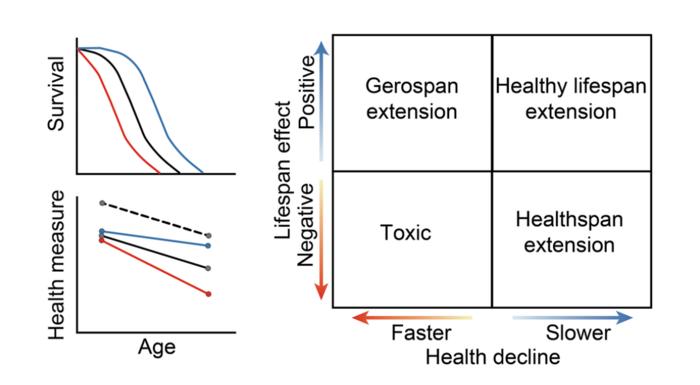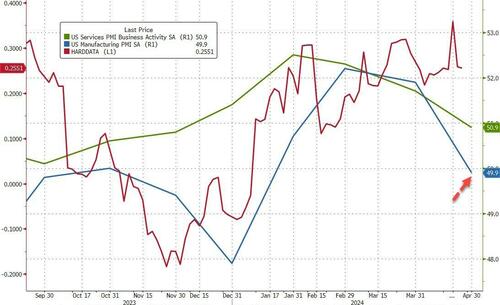“The ultimate goal of exploiting model organisms to screen for anti-aging interventions is to identify treatments that might translate to healthy lifespan extension in humans.”
BUFFALO, NY- April 23, 2024 – A new research paper was published in Aging (listed by MEDLINE/PubMed as “Aging (Albany NY)” and “Aging-US” by Web of Science) Volume 16, Issue 7, entitled, “The coupling between healthspan and lifespan in Caenorhabditis depends on complex interactions between compound intervention and genetic background.”
Aging is characterized by declining health that results in decreased cellular resilience and neuromuscular function. The relationship between lifespan and health, and the influence of genetic background on that relationship, has important implications in the development of pharmacological anti-aging interventions.
In this new study, researchers Stephen A. Banse, E. Grace Jackson, Christine A. Sedore, Brian Onken, David Hall, Anna Coleman-Hulbert, Phu Huynh, Theo Garrett, Erik Johnson, Girish Harinath, Delaney Inman, Suzhen Guo, Mackenzie Morshead, Jian Xue, Ron Falkowski, Esteban Chen, Christopher Herrera, Allie J. Kirsch, Viviana I. Perez, Max Guo, Gordon J. Lithgow, Monica Driscoll, and Patrick C. Phillips from the University of Oregon, The State University of New Jersey (Rutgers), The Buck Institute for Research on Aging, and National Institute on Aging assessed swimming performance as well as survival under thermal and oxidative stress across a nematode genetic diversity test panel to evaluate health effects for three compounds previously studied in the Caenorhabditis Intervention Testing Program and thought to promote longevity in different ways – NP1 (nitrophenyl piperazine-containing compound 1), propyl gallate, and resveratrol.
“Overall, we find the relationships among median lifespan, oxidative stress resistance, thermotolerance, and mobility vigor to be complex.”
The researchers showed that oxidative stress resistance and thermotolerance vary with compound intervention, genetic background, and age. The effects of tested compounds on swimming locomotion, in contrast, are largely species-specific. In this study, thermotolerance, but not oxidative stress or swimming ability, correlates with lifespan. Notably, some compounds exert strong impact on some health measures without an equally strong impact on lifespan.
“Our results demonstrate the importance of assessing health and lifespan across genetic backgrounds in the effort to identify reproducible anti-aging interventions, with data underscoring how personalized treatments might be required to optimize health benefits.”
Read the full paper: DOI: https://doi.org/10.18632/aging.205743
Corresponding Authors: Gordon J. Lithgow, Monica Driscoll, Patrick C. Phillips
Corresponding Emails: glithgow@buckinstitute.org, driscoll@dls.rutgers.edu, pphil@uoregon.edu
Keywords: aging, healthspan, genetic diversity, compound intervention
Click here to sign up for free Altmetric alerts about this article.
About Aging:
Aging publishes research papers in all fields of aging research including but not limited, aging from yeast to mammals, cellular senescence, age-related diseases such as cancer and Alzheimer’s diseases and their prevention and treatment, anti-aging strategies and drug development and especially the role of signal transduction pathways such as mTOR in aging and potential approaches to modulate these signaling pathways to extend lifespan. The journal aims to promote treatment of age-related diseases by slowing down aging, validation of anti-aging drugs by treating age-related diseases, prevention of cancer by inhibiting aging. Cancer and COVID-19 are age-related diseases.
Aging is indexed by PubMed/Medline (abbreviated as “Aging (Albany NY)”), PubMed Central, Web of Science: Science Citation Index Expanded (abbreviated as “Aging‐US” and listed in the Cell Biology and Geriatrics & Gerontology categories), Scopus (abbreviated as “Aging” and listed in the Cell Biology and Aging categories), Biological Abstracts, BIOSIS Previews, EMBASE, META (Chan Zuckerberg Initiative) (2018-2022), and Dimensions (Digital Science).
Please visit our website at www.Aging-US.com and connect with us:
- X, formerly Twitter
- YouTube
- Spotify, and available wherever you listen to podcasts
Click here to subscribe to Aging publication updates.
For media inquiries, please contact media@impactjournals.com.
Aging (Aging-US) Journal Office
6666 E. Quaker Str., Suite 1B
Orchard Park, NY 14127
Phone: 1-800-922-0957, option 1
###
Journal
Aging-US
DOI
10.18632/aging.205743
Method of Research
Observational study
Subject of Research
Animals
Article Title
The coupling between healthspan and lifespan in Caenorhabditis depends on complex interactions between compound intervention and genetic background
Article Publication Date
12-Apr-2024





































